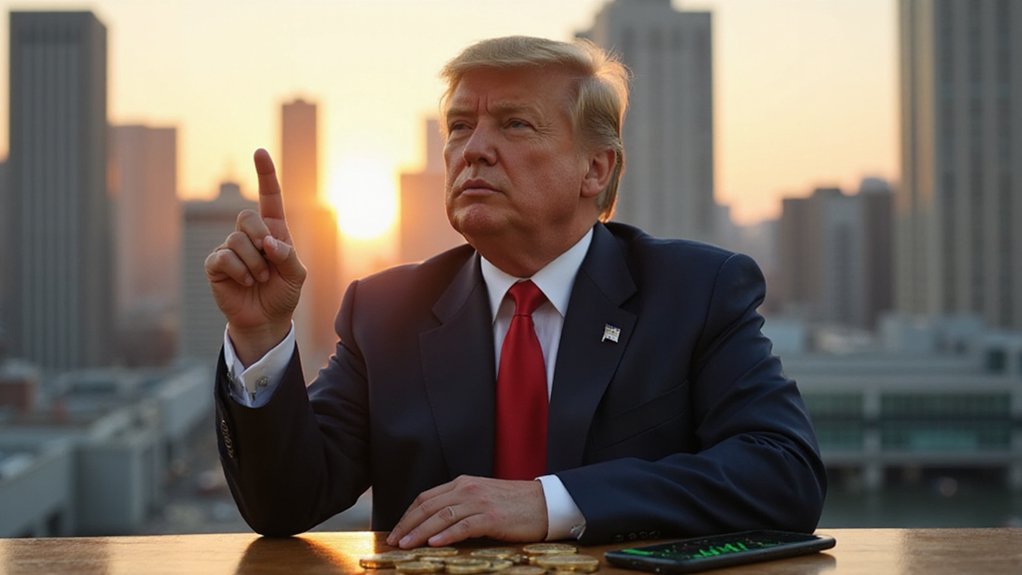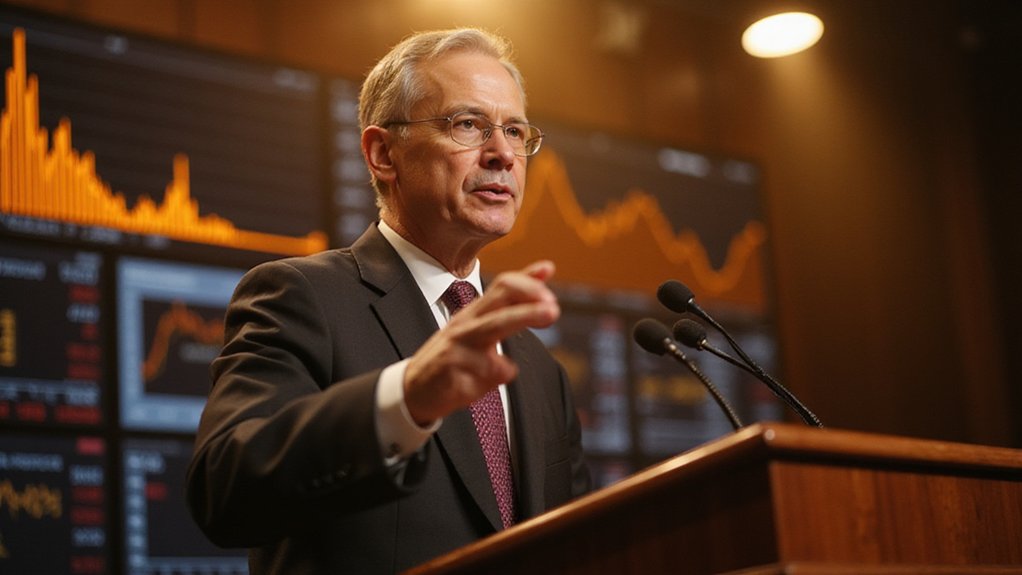While the cryptocurrency market has long operated on predictable four-year cycles that allowed traders to set their watches by halving events and subsequent bull runs, the landscape now unfolds with the frantic pace of a day trader’s heart monitor during a flash crash.
The transformation from chaos to control represents perhaps the most dramatic shift in modern financial markets, where a sector once dismissed as digital tulips now commands a $3.4 trillion market cap that peaked near $3.8 trillion in 2024.
From digital tulips to trillion-dollar titan—cryptocurrency’s evolution from financial pariah to institutional darling rewrites the rules of modern markets.
This metamorphosis becomes particularly evident when examining the sheer velocity of capital flows—trading volumes are projected to exceed $108 trillion by year’s end, representing a staggering 90% increase from 2022 levels.
The United States alone accounts for over $2 trillion in trading volume, while institutional capital flows increasingly follow traditional financial calendars rather than the whims of retail speculators armed with stimulus checks and Reddit recommendations.
The accelerated cycle patterns reveal a market achieving uncomfortable maturity. Bitcoin’s projected range of $80,440 to $123,000 for 2025 reflects not wild speculation but sophisticated modeling that accounts for institutional participation and regulatory clarity.
The expected Q1 2025 bull run, followed by summer corrections and fall recovery, mirrors traditional asset class behavior more than the chaotic price swings that once characterized crypto markets. Sophisticated investors increasingly pursue crypto staking as a means to generate consistent returns between 5-15% annually while contributing to network security through locked asset participation.
Regulatory transformation has emerged as the invisible hand guiding this evolution. The EU’s December 2024 regulations, India’s 30% tax on Virtual Digital Assets (accompanied by a rather punitive 1% TDS), and global regulatory shifts have created frameworks that paradoxically increase participation through imposed structure.
Turkey’s emergence as a crypto hub demonstrates how regulatory clarity attracts rather than repels institutional capital. The SEC’s recognition of digital assets as a distinct asset class by August 2025 will further cement this transformation through comprehensive guidelines that enhance market clarity and investor confidence.
Perhaps most tellingly, global crypto ownership expanded from 21% to 24% in surveyed countries, while women traders increased by 300% in 2025—suggesting demographic diversification beyond the stereotypical basement-dwelling maximalist.
India’s $260 billion transaction volume, despite regulatory headwinds, exemplifies grassroots adaptation that transcends governmental skepticism. The integration of artificial intelligence with blockchain protocols has created nearly 90 AI tokens with a market value surge from $2.7 billion to over $39 billion, demonstrating how technological convergence accelerates institutional adoption.
The market’s 31.3% projected CAGR through 2025 reflects not speculative fever but calculated institutional adoption, transforming what was once financial anarchy into something resembling controlled chaos—if such a contradiction can exist outside of crypto markets.





